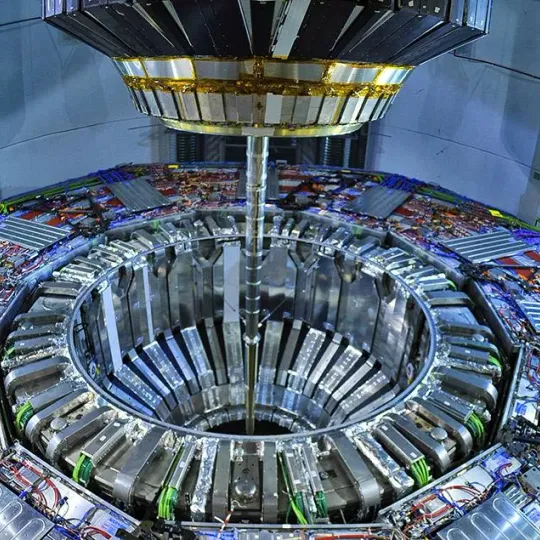
Long-Term Vision for Particle Physics Demands U.S. Action Now
By Isaac Margolis
Earlier this month, the National Academies of Sciences, Engineering, and Medicine released a report recommending that the United States initiate development of what would become the world’s most powerful particle collider. The proposal, part of a long-term vision for particle physics, outlines the scientific promise and global leadership potential that such a machine could offer. If this comes to fruition, this collider would not only advance our understanding of the universe’s most fundamental laws but also reestablish the United States as a central figure in global physics research.
Particle accelerators are not new to scientific discovery. The Large Hadron Collider (LHC), operated by CERN in Europe, famously confirmed the existence of the Higgs boson in 2012, a milestone achievement that had taken decades to develop. But the LHC, despite its past breakthroughs, is now approaching the limits of its capability. New questions remain unanswered, such as: What is dark matter composed of? Why does matter dominate over antimatter? Are there forces or particles beyond the Standard Model? These questions could be better answered by a next-generation collider.
The implications of such a machine, however, extend far beyond theoretical physics. Particle accelerators already play a significant role in everyday life. As outlined by the Environmental Protection Agency, these machines are essential to many non-research applications, including but not limited to cancer radiation therapy, medical imaging, industrial sterilization, and national security screening. The continued development of accelerator technology has historically produced unexpected but transformative advancements. A future collider could sustain this discovery and innovation, reinforcing the United States’ technological impact in both scientific and industrial contexts.
Moreover, national investment in scientific infrastructure tends to produce long-term economic and educational benefits. Major science projects create high-skilled jobs, foster international collaboration, and stimulate educational interest in science, technology, engineering, and mathematics (STEM). A collider on this scale could serve as a cultural touchstone for science education, inspiring students to pursue careers in research and development while demonstrating the real-world value of physics, engineering, and computational innovation.
However, this project would come with concerns. The construction and operation of a new collider would potentially require tens of billions of dollars in public funding. Critics may question whether such investments are responsible in a time when urgent challenges (such as climate change, public health, and infrastructure) also demand federal resources. Others raise environmental concerns, particularly regarding the energy consumption of particle accelerators and the management of radiation exposure, even though accelerator-based research poses minimal radiation risk under current safety protocols. These critiques underscore the complexity of the issue. While it is true that resources are finite, it is equally true that long-term scientific investment is not mutually exclusive with addressing pressing social challenges. Historically, major public science initiatives have generated technologies with unforeseen applications, with GPS, the internet, and medical imaging all having emerged from government-funded research in fundamental physics. Strategic investment in scientific infrastructure often leads to unrelated benefits across a multitude of seemingly unrelated sectors. To reject such opportunities because their utility is not immediate would be a mistake.
It is also a matter of global standing, as Europe has led particle physics for over a decade through CERN, and China has announced intentions to build a collider of its own. If the United States opts out of this moment, it risks giving up not only scientific leadership but also the innovation economy that tends to follow such large-scale projects. The collider isn’t just about understanding the universe; it’s a statement about national priorities and the value we place on scientific exploration and discovery.



